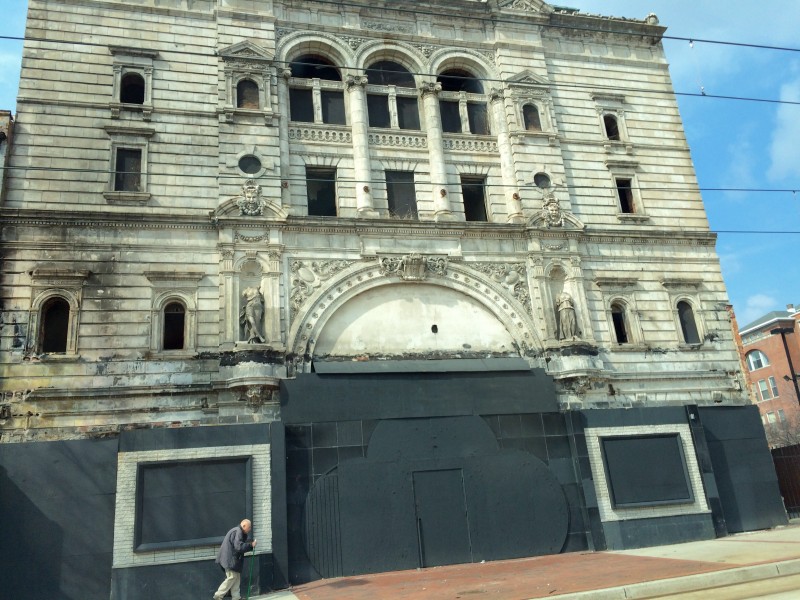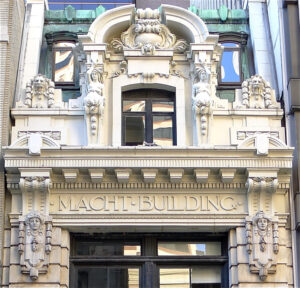
Image courtesy the author
by John Benneman
I am a photographer who has studied and researched most of the theaters in Baltimore, but the one I love the most is the Mayfair. It was the building that made me want to become a theater historian and study the fine buildings in Baltimore. The beautiful front was done in a Romanesque style and was billed as one of the finest theaters in the country.
Life for the Mayfair started in 1870 when it was known as The Natatorium, an indoor swimming pool and spa. James L Kernan, a former veteran Confederate and theatrical entrepreneur, took over the building in 1890 and converted it into a vaudeville theater called The Howard Auditorium Music Hall. In 1903, Kernan decided to do away with the Music Hall to start his Million Dollar Triple Enterprise which consisted of three buildings in one complex: The Auditorium Theatre, The Maryland Theatre, and The Hotel Kernan. After his death, in 1912, things changed. The Maryland was taken up by assistant manager Leonard B McLaughlin and business manager Frederick C Schanberger along with the Auditorium.
In 1941, the Auditorium became The Mayfair operated, by C.W Hicks, who also operated the Maryland, torn down in 1951. In 1957, JF Theatres took ownership of the Mayfair and outfit it for live television productions and also equipped it with three-dimensional sound. The theater also featured blacklight effects to illuminate designs on the carpet and airplane seats. In 1960, the Mayfair was equipped with 70mm equipment, and three years later received a thorough remodeling for the Maryland Premier of Lawrence Of Arabia, which included a new marquee, new deep red carpet throughout the theater, a new screen, and a new entrance into the lobby.
In 1986, the Mayfair was closed due to the decline of Howard Street. The next year, the city took ownership of it and had it put up for auction, but when bidders offered no more than $200,000 for the property it was boarded up and left vacant. In 1998, the roof collapsed into the interior, destroying the balcony and seating area, even crashing into the basement where a beam went through the floor to the swimming pool, covering it with rubble.
On September 24, 2014, the marquee was in the process of being removed when the sparks from the acetylene torch sparked a fire that scorched the buildings facade and the building next door. Today, without the marquee, there is no telling what will happen next to the Mayfair.
-John
John Bennaman photographs and studies the history of Baltimore City theaters.
Want to have your love letter to a Baltimore building featured? Visit http://baltimorearchitecture.org/love-letters-to-baltimore-buildings/ for details on how to submit.


